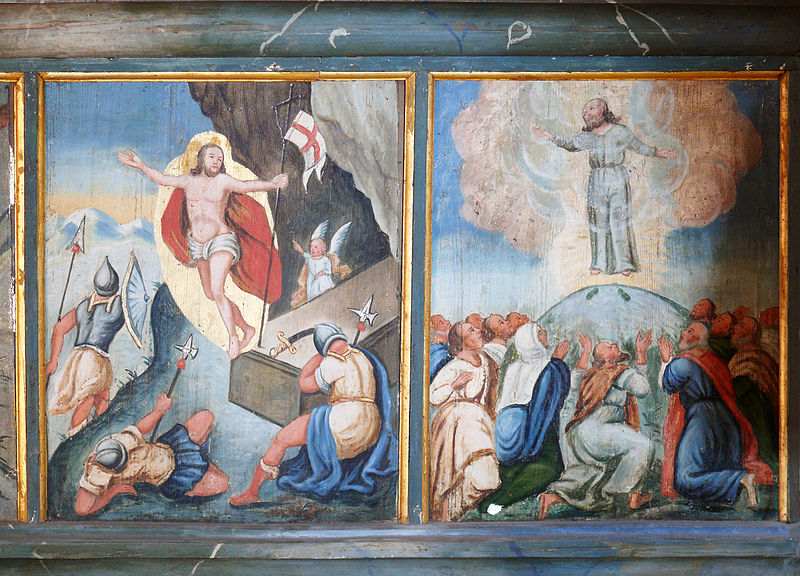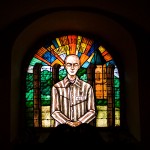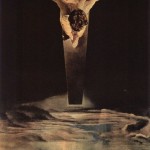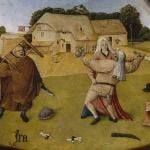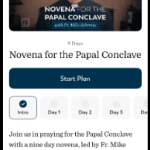I love the Easter liturgical season. For the obvious reasons.
But I also love the white robes, signifying celebration. We have 40 days of rejoicing as well as the 40 days of preparation of Lent. And also the readings. John, linked with Acts. It’s not just chronological–the stuff in Acts happened right after the Resurrection–it is ontological. The Resurrection is and leads to the life of the Church. The Church happened, quite literally, because of the Resurrection. No Resurrection, no Church. And by the ministry of the Church (as the priest says during confession), the Resurrection is made present and available to us. Without the Church, none of us would know about the Resurrection.
And during this period, we are led up to the Ascension.
The first and obvious thing to say about the Ascension is that it is not a leaving of Jesus, but a change in his mode of being present to us. He is still present in the Spirit–when two or three of you are gathered in my name, I am present among them–; He is still present in service–that which you do to the least of these, you do to me–; and He is still present, most of all, physically present, in the Eucharist.
But the Ascension is also a sending. It prompts us to action. Yes, Jesus is Lord–He ascends to sit at the right hand of the Father–but he’s not going to do everything for us, because he made us free and creative in his image. The Risen Christ is Lord and ushers in a New Creation, but it’s up to you to work in the vineyard to make it real. Yes, in fellowship with Jesus, and by the grace of the Spirit. But it’s up to you now. As Resurrection leads to Ascension, Ascension leads to Pentecost: the founding of the Church.
The Ascension liturgy expresses it very well by pairing the Ascension account from Acts with the end of the Gospel of Matthew and the Great Commission (Matt 28:16ff):
Now the eleven disciples went to Galilee, to the mountain to which Jesus had directed them. When they saw him, they worshiped him; but some doubted. And Jesus came and said to them, “All authority in heaven and on earth has been given to me. Go therefore and make disciples of all nations, baptizing them in the name of the Father and of the Son and of the Holy Spirit, and teaching them to obey everything that I have commanded you. And behold, I am with you always, to the end of the age.”
“I am with you always, to the end of the age”: the Ascension is not Jesus leaving us, it is Jesus changing his mode of presence to us.
But here also is the Great Commission: “Go therefore and make disciples of all nations, baptizing them in the name of the Father and of the Son and of the Holy Spirit, and teaching them to obey everything that I have commanded you.” The Ascension is a sending. The disciples aren’t supposed to just stare up at the place where Jesus vanished. I am Lord–go therefore and make disciples of all nations. Because I am the Lord, you must go.
Quintessential liturgy that is the liturgy of the Ascension: after this Gospel reading, of course, is the Eucharistic liturgy, Jesus becoming really present for us. What is said in the Gospel reading is made literally true in the following moment: “I am with you.” Emmanuel.
And at the end of the Mass: “Ite!” Go! Be disciples, and through discipleship make more disciples. Go.
Ite!
Surrexit Christus vere Alleluia! Ergo ite!
“Freiberg a.N. Beihingen Amanduskirche Nordempore Balustrade Auferstehung und Himmelfahrt” by Paintings by Hans Stiegler.
Photograph by Aristeas (Roman Eisele) – Own work. Licensed under CC BY-SA 3.0 via Wikimedia Commons.

